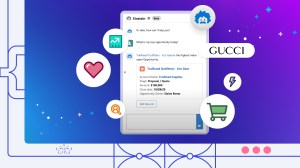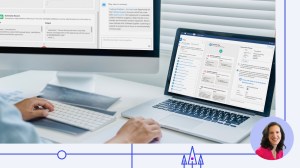Few businesses can say that their tech tools have helped them increase revenues by $20 million. In the construction industry that still largely runs on paper contracts, this is rare.
Technically, it was Andy, Adam, and Alex Lindus’ mom who was the early adopter in the family, buying the company’s first computer back in 1985. Now, her three sons continue that legacy as co-owners of Lindus Construction, a $40 million construction and remodeling business in Minnesota and Wisconsin that has become the nation’s number one installer of specialized gutters.
Lindus Construction began its Salesforce journey in 2013, and since then, prioritized employee and customer experiences within the Salesforce platform to grow their business and change the way the entire business is run. We sat down with Andy, Adam, and Alex to hear how.
Tell us about your company — a truly family-owned business.
Andy: Our dad started out as a hog farmer, and also did siding, decking and small remodeling jobs on the side. I remember the day I went out to see if my dad wanted a popsicle and found he had fallen out of a tree he was trimming — the saw was still up there. He broke his back, and had to sell the hogs while he was out of work for six months. It all turned out OK, though, because he was soon making more money from home remodeling than he did from selling the pigs.
Our parents stepped away from the day-to-day of the business in 2011 after years of putting my brothers and me into positions to make major decisions. People ask how three brothers can manage a business together, but it works because there always has to be a majority. We like to say we communicate very loudly and passionately when we disagree.
How does Lindus Construction use Salesforce?
Alex: Salesforce has changed the way we run our entire business. We use Sales Cloud for our business development; brought on FinancialForce to bring invoicing into the platform; created a timekeeping app on the platform to eliminate double entry and get insights on how much time the team spends on job sites and travel; and use Maps to schedule inspections and deliveries.
Andy: We’ve grown our company 166% with no real increase in staff.
Alex: We were running our business with no insight or data and hoping at the end of the day that it would be profitable. Now, it’s the same number of people, but they are more productive, more accountable, and we have data that shows us what is really happening.
Can you share an example of how you’ve used data to run the business better?
Alex: It’s one thing to capture data, and another to read and understand that data.
Andy: Our appointment schedulers went from upper 70s conversion rates for online leads to the high 90s because we were able to get back to those leads faster thanks to the technology, and we understood how to incentivize those internet leads for our employees. That meant our cost per lead and cost per sale went down, and that makes or breaks your profitability.
What was the turning point that encouraged you to go digital?
Alex: We used to do everything on paper. I would hand the sales team a list of appointments and they would go out, fill out contracts, and hand them in. It was then someone’s full time job to input that data into the computer.
At one point, I found out 1,797 of those contracts over six months never got filled out. I felt so out of control — I freaked out.
That’s what started our Salesforce journey. It’s technology that allows us to capture that data, bring accountability to our staff, and now, incentivize them to perform at a higher level.
Andy: Bills in the hundreds of thousands of dollars can get scary, but we are so confident in the technology right now. It’s given us so much control and we can do this without a college degree amongst us.
Alex: I can tell you within $400,000 what our bottom line is going to be at the end of 2021, and we are one of the few construction contractors in the country that can say that.
It’s one thing to capture data, and another to read and understand that data.
Alex Lindus
Construction, home building and renovations have seen a surge since the pandemic, with lumber prices going up and the housing market hot. How has this affected your business?
Alex: Last December, as part of my end of year planning, I was able to look at our sales averages and our average growth levels to place my orders ahead of time. So during the roughest months of the pandemic, we were one of the only roofers that had certain types of shingles and supplies we needed.
Our production in April was higher than any of our suppliers’ customers because we already had the materials. No one could have expected that suddenly we’d see 20-week lead times from almost every manufacturer. If you’re waiting until April to put your order in, that puts you in a bad spot, but thanks to our data, we knew what we needed going into the season.
How does technology come into play when you need to pivot the business (like your dad did)?
Adam: Having data at our fingertips helps us to figure out when things are one-off issues, or if there’s a greater shift that needs to happen. Salesforce allows us to quickly see if it’s a problem that needs a policy change or if it’s a one-off and we can move on with our lives.
Alex: For example, we saw that our production teams were taking tons of trips to Menards, the local hardware store, based on the number of receipts they submitted for supply trips. We know that each trip takes a long time, so we incentivized fewer visits.
Our guys didn’t just cut their trips in half — they went on a third of the trips they used to, which means more time on the job and more projects completed on time.
Another example is that our sales teams are paid based on the profitability of the job, and it took 20 hours each week for our staff to calculate pay every week. Now, it’s automated with a click of a button. Because of Salesforce, we’re now able to pay their commission up front because we trust our pricing process, and no longer need to wait for the job to be final.
As a seasonal service limited by Midwest winters, demand can get overwhelming. How do you manage customer relationships through those busy periods?
Alex: If you’ve ever gotten work done on your house, you know that it’s usually a painful process. We used to hear complaints from customers about how they wouldn’t know what was going on with their project until the day the team showed up — but what they don’t know is that the project has been moving forward in the month or two since the contract was signed.
Now, we can have constant communication automatically based on what’s happening as their project moves forward in our system, sending automated texts when plans are finalized or supplies are received.
Technology has improved how you run the business, but how has this changed your employees’ experiences?
Alex: Our employees were nervous at first, but we have spent years building trust with them, which allowed us to make these changes.
It was a big change for our sales teams and our office staff, but if you told them today to go back to the old ways of working, I know they would all quit. It allows them to do their jobs more efficiently, save time, and feel confident that they’re doing what they need to get done each day.
Accountability is the life of why this works. If you’re a salesperson and you can use technology to look better and sound better and do your job better, you’re going to use it.
Do you have a word of advice for other small business owners looking to digitally transform their business?
Alex: You need someone at the top buying into it and being involved. If it wasn’t for my brothers leading the charge, we wouldn’t be nearly as far in our technology journey. We have a full-time developer, we brought a head of marketing on board, and have staff dedicated to this effort.We hope to productize how we use this technology for other contractors, because it’s not easy, but it has grown our business so much.
To learn more about Sales Cloud, visit our product page here. To learn more about CRM for small businesses, visit here.
















